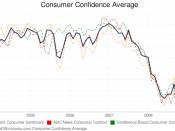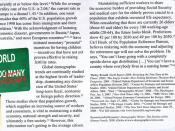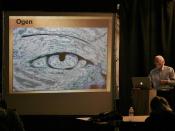These different decision making models are approaches the problem of consumer decision making differently. The Engel-Kollat-Blackwell model is essentially a conscious problem solving and learning model of consumer behaviour. This model has a good description of active information seeking and evaluation processes of consumer. The information processed in this model is the stimulus. The consumeráæs decision processes act upon this stimulus in order to determine a response to it. These models attempt to explain each stage and show interrelated between the stages of consumer buyer behaviour from the stimulus, through the purchase to post purchase behaviour.
The Howard-Sheth model (1969) is a learning model designed to explain the brand choice of an individual faced with several choice alternatives. This model is an attempt to explain rational brand choice behaviour within the constraints of limited individual capacities and incomplete information. This model can divided roughly into four fundamental parts- (1) stimulus input variables, (2) exogenous variables, (3) sequential output variables, and (4) the áçinternal state of buyer.áè
However, the limitation of this model is that it has little practical value for marketing practitioners.
The two major advantages of the Howard-Sheth model are following: (i) It has been partially tested empirically, thus establishing some credibility for the model (ii) The model is also a dynamic model Overall the Engel-Blackwell-Miniard model provides more comprehensive and accurate comparison with Howard-Sheth model. The two models are similar in as much as they both propose a rational consumer, but one who is prepared to satisfies where appropriate. The environmental influences of the Engel-Blackwell-Miniard model compare directly to the exogenous variables as outlined in the explanation of Howard-Sheth model.
Another famous consumer behaviour model is Nicosia model (1966). Francesco Nicosia was one of the first consumer behaviour modelers to shift focus from the act of purchase itself to the more complex decision process that consumers engage in about products and services. This model is characterized as a communications model that begins with a firmáæs communication to the consumer via advertising and culminates with consumer feedback to the firm. This model contains four major components or fields: (1) the firmáæs attributes and outputs or communications and the consumeráæs psychological attributes, (2) the consumeráæs search for and evaluation of the firmáæs output and other available alternatives, (3) the consumeráæs motivated act of purchase, and (4) the consumeráæs storage or use of the product.
Francesco Nicosia assumes that the consumer is seeking to fulfilled specific goals and that initially there is no history between the consumer and the firm, so no positive or negative predispositions toward the firm exist in the consumeráæs mind. There are some limitations in Nicosia model which include an inadequate understanding of the influence and interrelationships among the consumer attributes represented by Subfield and the questionable assumption that no prior consumer knowledge or experience with the product exists.



